Edinburgh

The glamour of Princes Street is watched over by the majestic castle of Edinburgh. Its rich history has strengthened Edinburgh’s roots, and helped it test and adapt to the modernity of the 21st century, with its festivals, museums, galleries and the modern Scottish Parliament.
Edinburgh has more to offer than sightseeing. Its elite shops, best restaurants and bars add colour to its very modern character that is capped off with the city’s all-night parties. The city comes alive with its impromptu music sessions and fun parties.
The main festivals like Edinburgh Fringe Festival and the Edinburgh International festival, both held in August, are a main draw for many to the city. These celebrations are definite ‘not-to-be-missed’ events if one is traveling to Scotland around these dates.
The city is best discovered on foot and its narrow lanes, nooks and crannies, especially in the old city, wait to be explored. Edinburgh, along with its urban villages of Stockbridge and Cramond, enthral visitors with its brightly sunlit mountains and the deep blue sea not that far away.

Ranking only second to London in the list of important financial centres of the United Kingdom, and the fifth in Europe, the Edinburgh has consistently been voted as the best British city to live in by its residents.
Breath taking views and buildings that have seen enough of the city’s history, green hills and the cool waters have resulted in a beautiful city and along with its cosmopolitan ethos would ensure that Edinburgh will definitely be one of the highlights of a traveller’s European itinerary for many times to come.
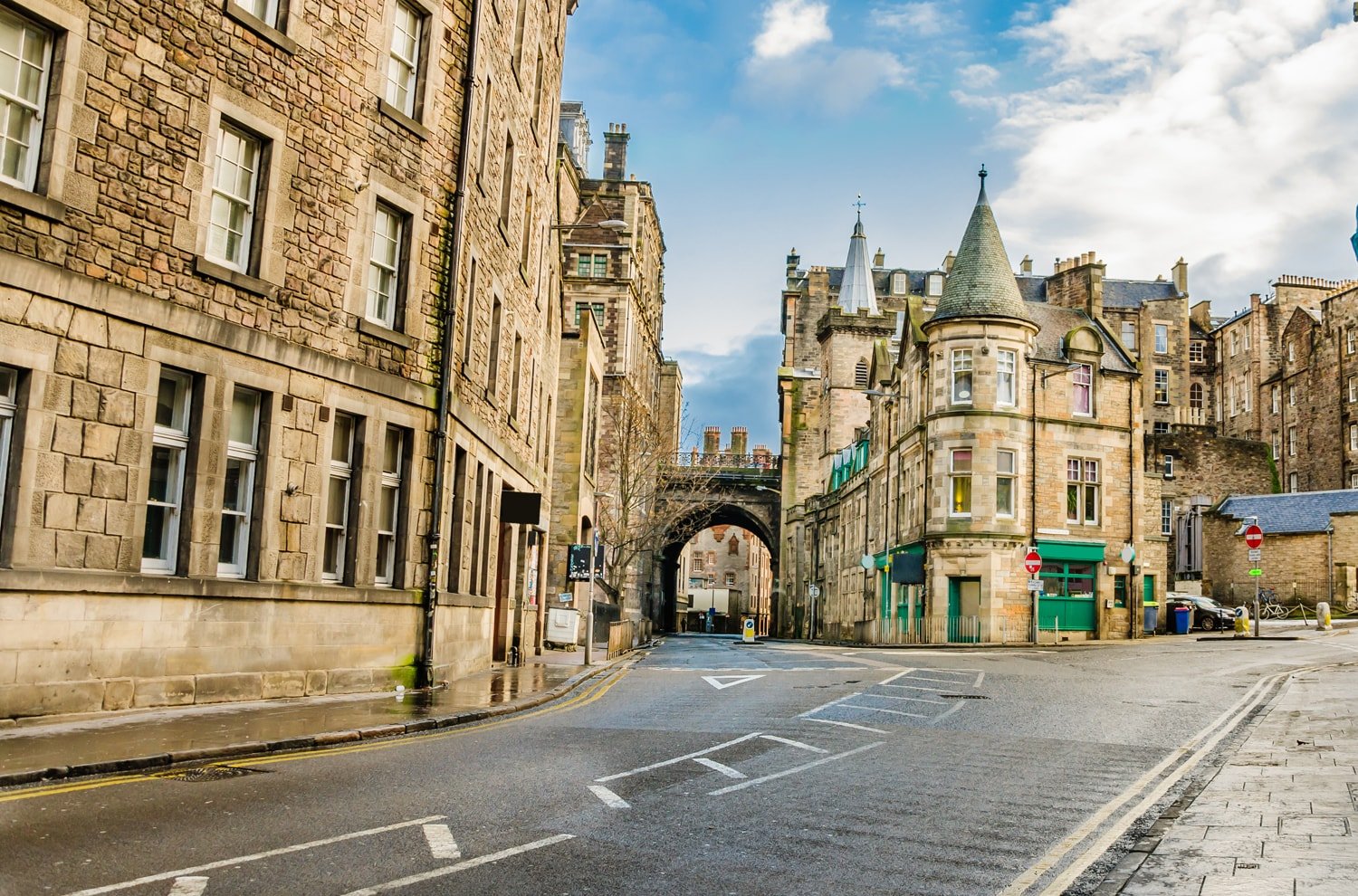
‘Edinburgh, is what Paris ought to be’said once famously the writer Robert Louis Stevenson.
BEST TIME TO VISIT

Spring and late autumn are indeed the best time to be in Edinburgh. May, early June and late September are the best months to visit. July and August will see heavy crowds, especially due to the Edinburgh International Festival and the Edinburgh Fringe Festival and other summer celebrations, which though, are some very interesting celebrations that should be a part of your itinerary should you be visiting the city around that time.
Winter is less appealing due to its short days and cold and wet weather. If you do happen to be around Scotland during winter then The New Year celebrations of Edinburgh are well renowned.
Air Travel
There are several international airlines and low cost airlines that serve Edinburgh namely Aer Arann, Aer Lingus, British Airways, British Midland United, EasyJet, Flybe, KLM, Lufthansa, Ryanair, Air France and Jet2. Ryanair and EasyJet offer competitive rates on routes connecting Edinburgh Airport, Glasgow International, Prestwick airport and London’s other major airports.
There are several flights from Edinburgh to Amsterdam, Brussels, Copenhagen, Cork, Dublin, Paris, Rome, Frankfurt, Zurich and Stockholm. London’s Heathrow airport and Gatwick airport have flights bound for Edinburgh, every hour.
An air link express service is run by Lothian Buses from the airport to Waverley station via Haymarket. There are buses every 10 minutes. The journey takes 25 minutes and the fare is £3.50.
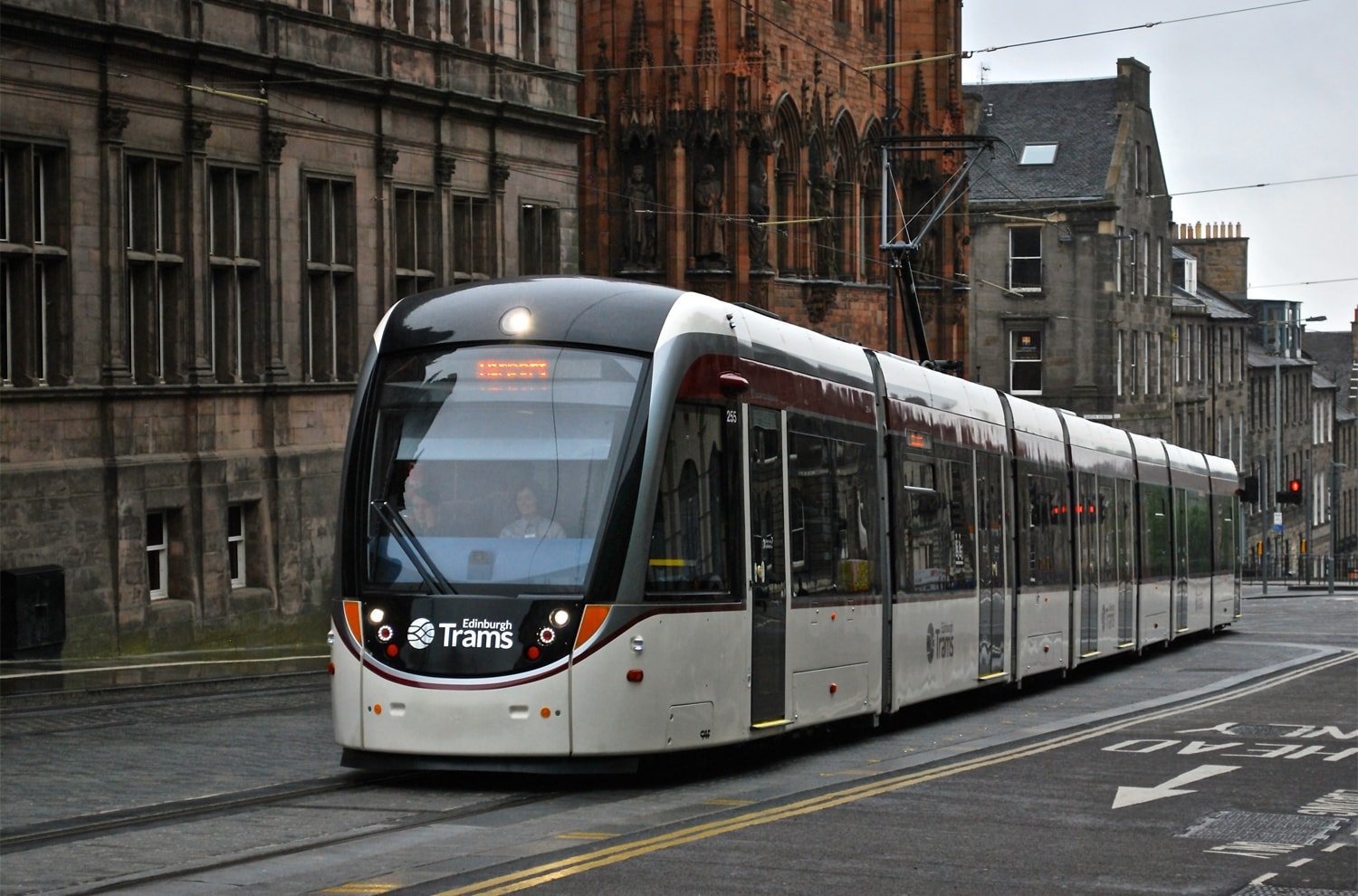
The Edinburgh tramway, opened in May 2014, links the airport to the city centre every 8-10 minutes, between 6:15 a.m. and 10:45 p.m. The ticket fare is £5/person and £8 for an open return, to be purchased before boarding, from the vending machine.
Transfers from Glasgow Airport
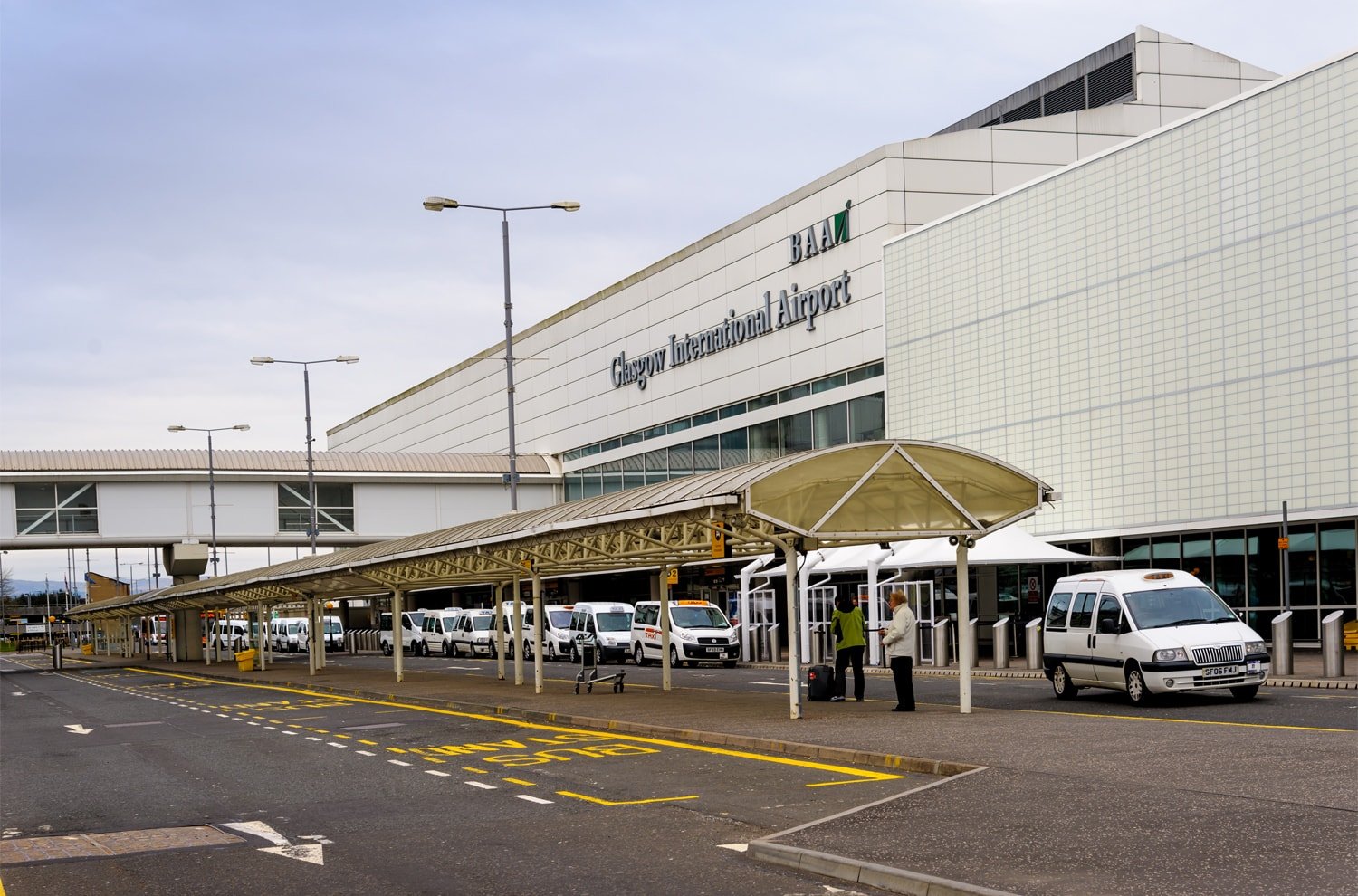
Train Travel
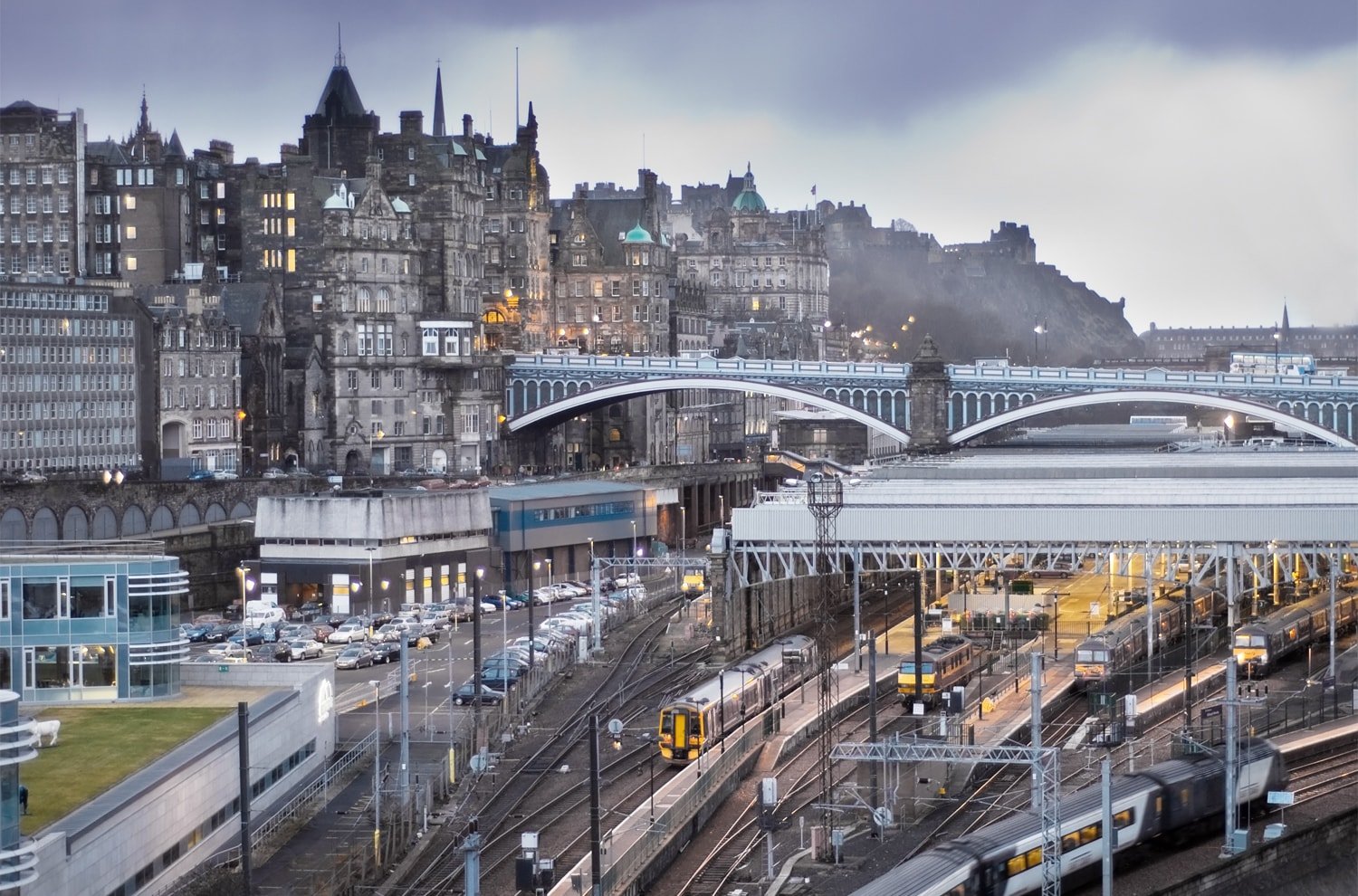
Waverley station is the city’s main train hub. It is located below Waverley Bridge and is around the corner from the Scott monument. The travel from Edinburgh to London only takes 4 ½ hours by fast train.
Though opened in 1846, Waverley station was rebuilt between 1892 and 1902. Serving over 14 million people in a year, it is situated between the old and the new towns, beside Princes Street, Edinburgh Castle and the Princes Street gardens.
Streaks of the history are still evident in the station’s domed ceiling where cherubs are seen amid scrolled ironwork.
Haymarket, Edinburgh’s other main station is just a four-minute journey by train and is situated west of Waverley Station. Most trains from Glasgow and other places from west and north, stop here.
THINGS TO DO
Edinburgh Castle
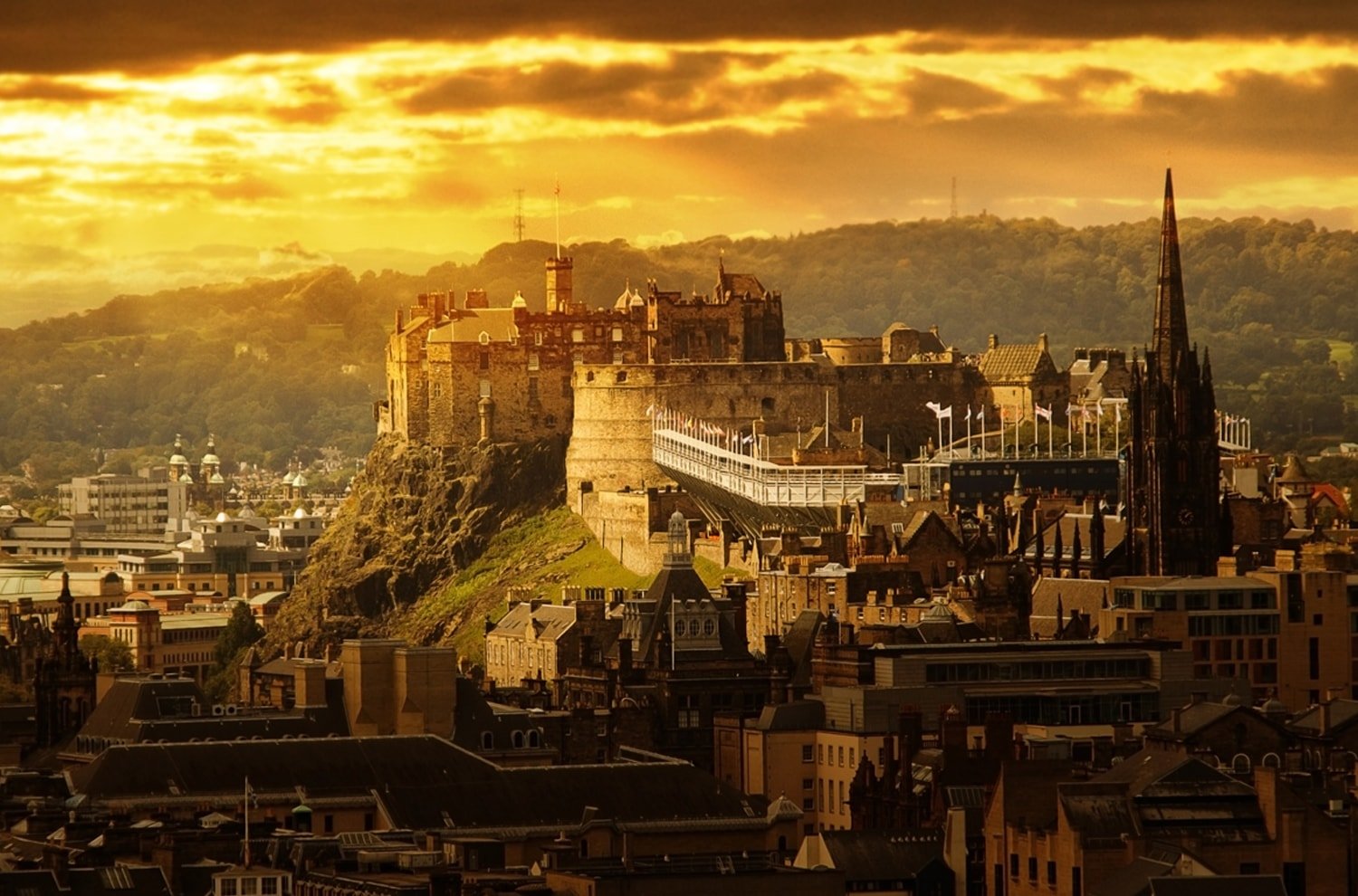
As a royal residence to King Malcolm Canmore (r 1058 – 93) and Queen Margaret, who both first made this castle their home in the 11th century and as a military stronghold, the Edinburgh castle has played a pivotal role in Scottish history.
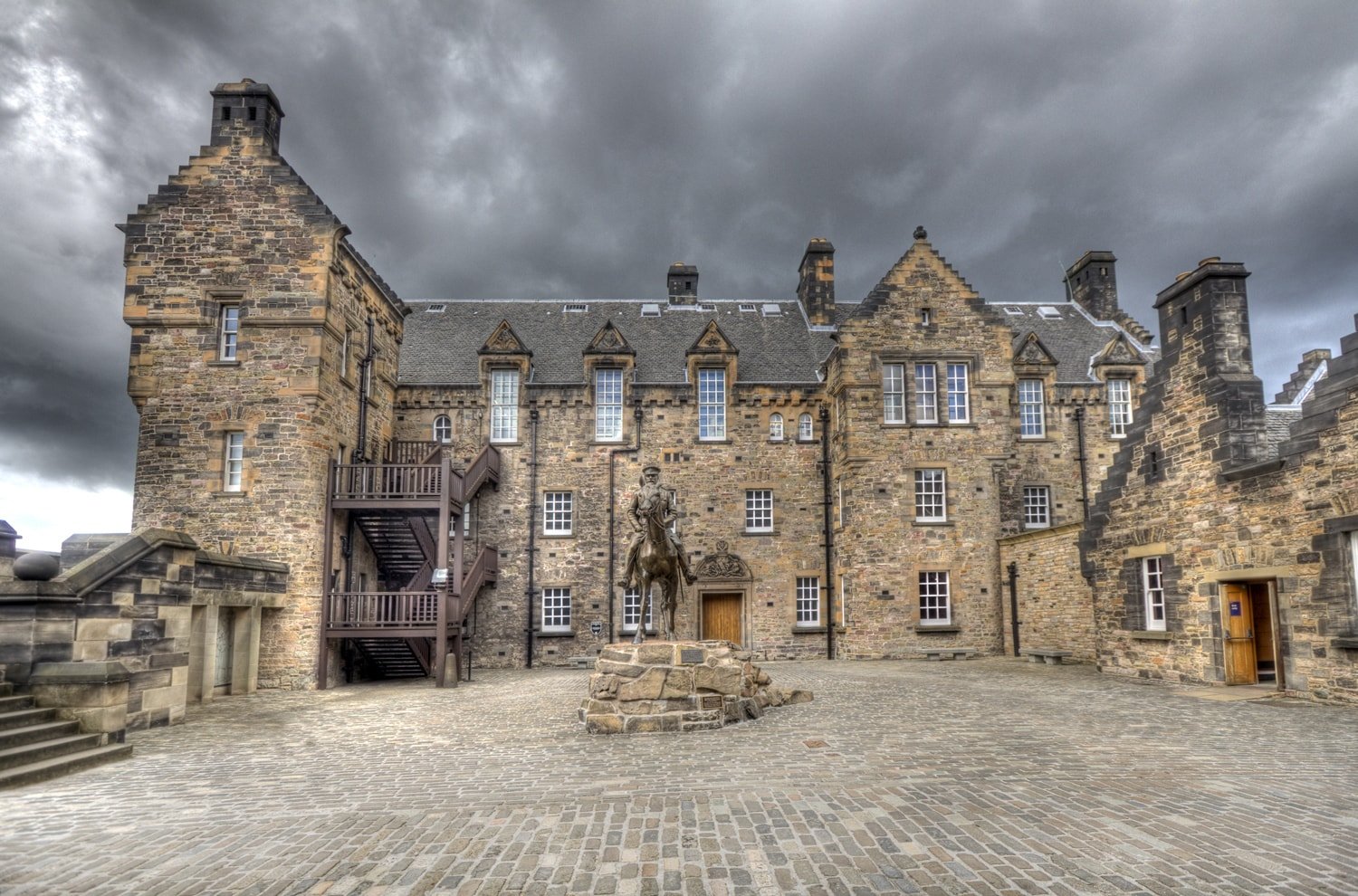
Of course, there are many sceptics who do claim that the stone that was returned to Scotland is a fake.
The section which is now called Queen Mary’s apartments is where Mary, the Queen of Scots, gave birth to James VI, the future King of Scots, who later became James I, King of England. The arms and armour are displayed in the Great Hall, under a vaulted, beamed ceiling, where Scottish parliament meetings were conducted until 1840.
Royal Mile
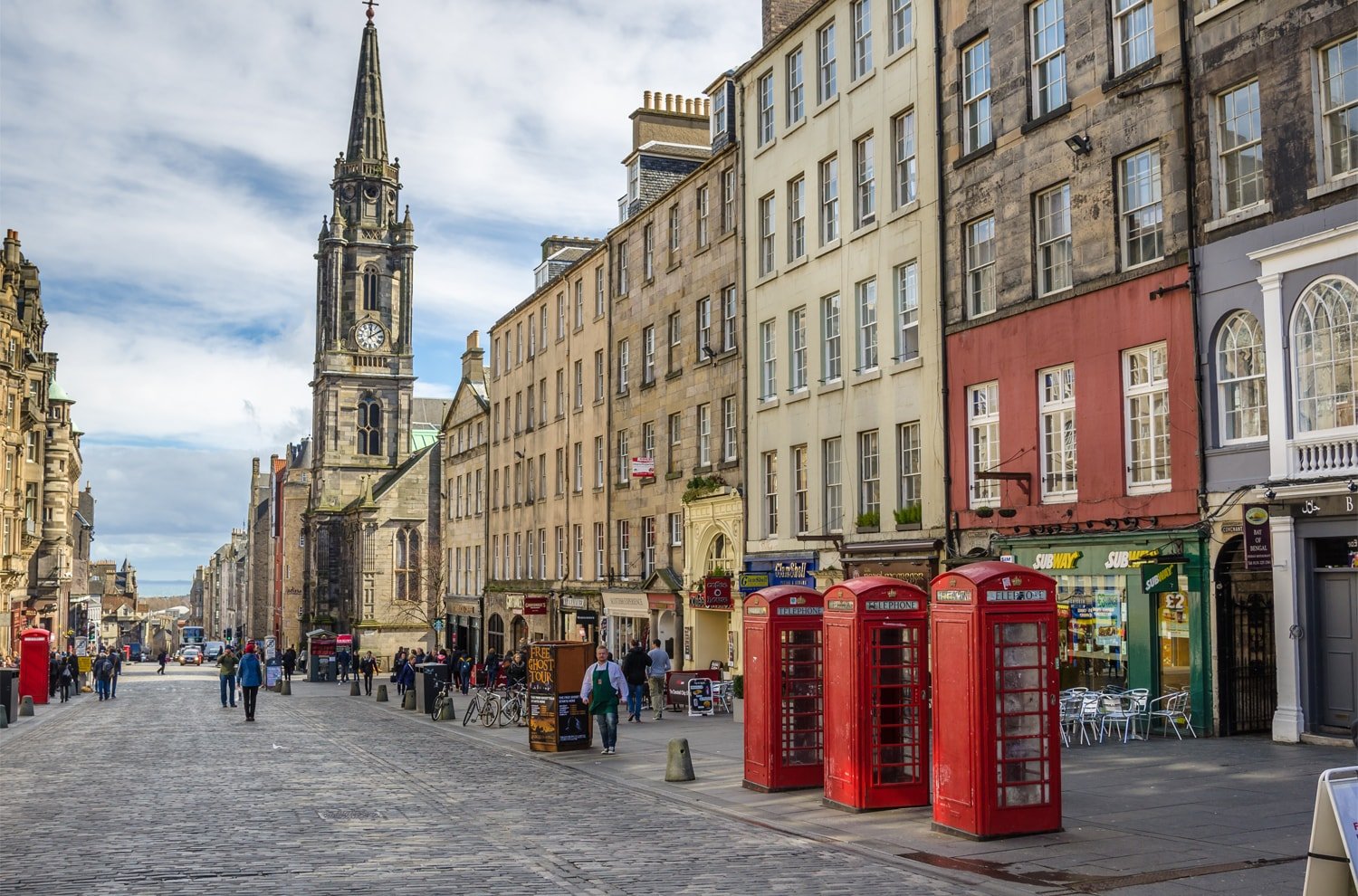
Extending from the Edinburgh castle high up on the looming hill over the city to the Holyroodhouse Palace, the Royal Mile is also called High Street, Lawn Market, Canongate and Castle hill at different points along the way. Some of the city’s oldest buildings are located here.
Some not so ancient establishments like Camera Obscura & World of Illusions and the Scotch Whisky Heritage Centre can also be found among the numerous shops and restaurants that take up most of the space of the Royal mile.
National Museum of Scotland
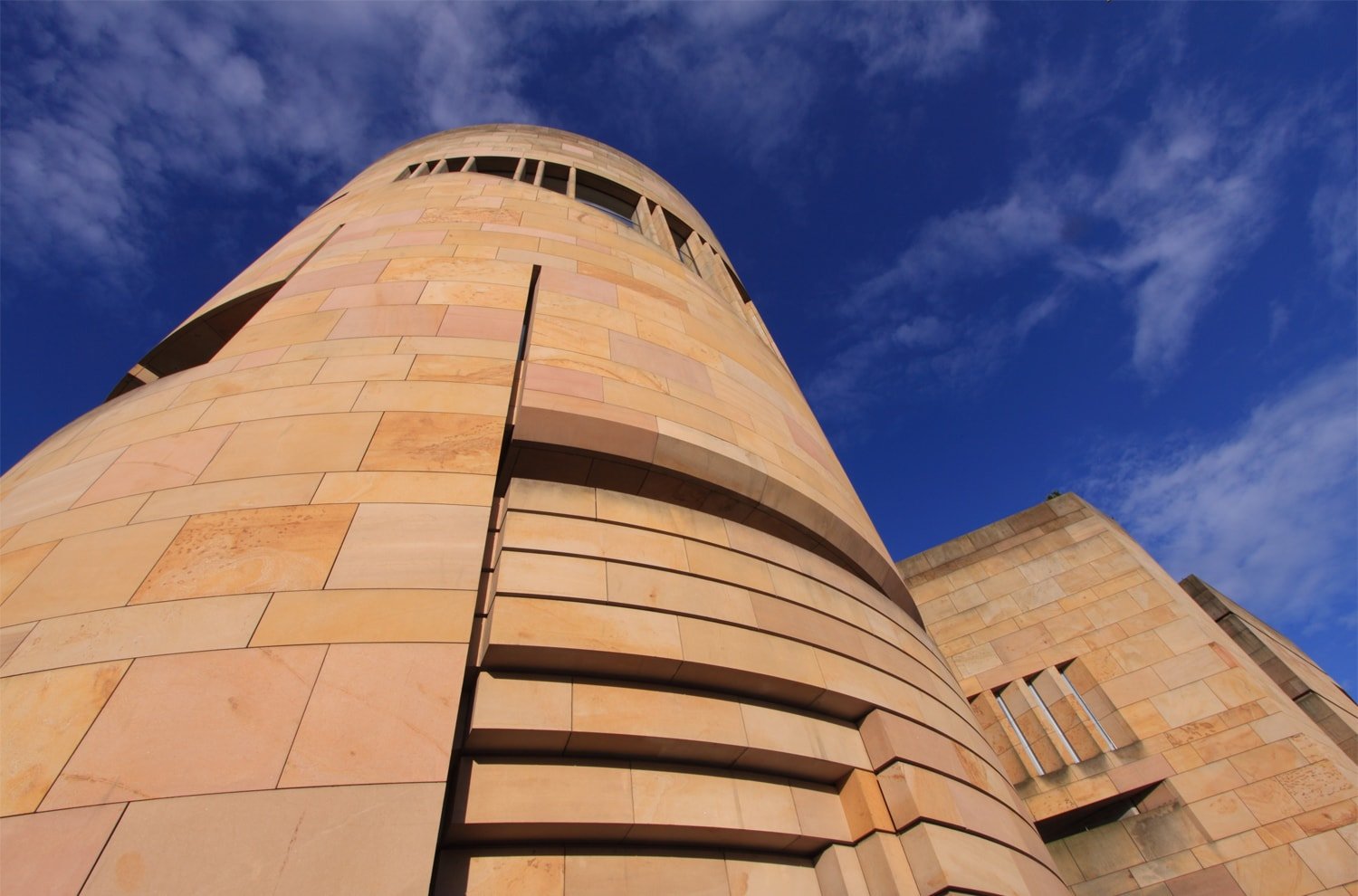
The basement has a crypt-like entrance after extensive renovation was carried out. Glass elevators take visitors to the Victorian grand hall and upper galleries. The hanging hippo and sea creatures of the wildlife panorama, a life-size skeleton cast of a Tyrannosaurus rex, Viking brooches, Pictish stones, Jacobite relics, the Stevenson family’s inventions like the lighthouse optics and Queen Mary’s clarsach (harp), are a few highlights.
Palace Of Holyroodhouse
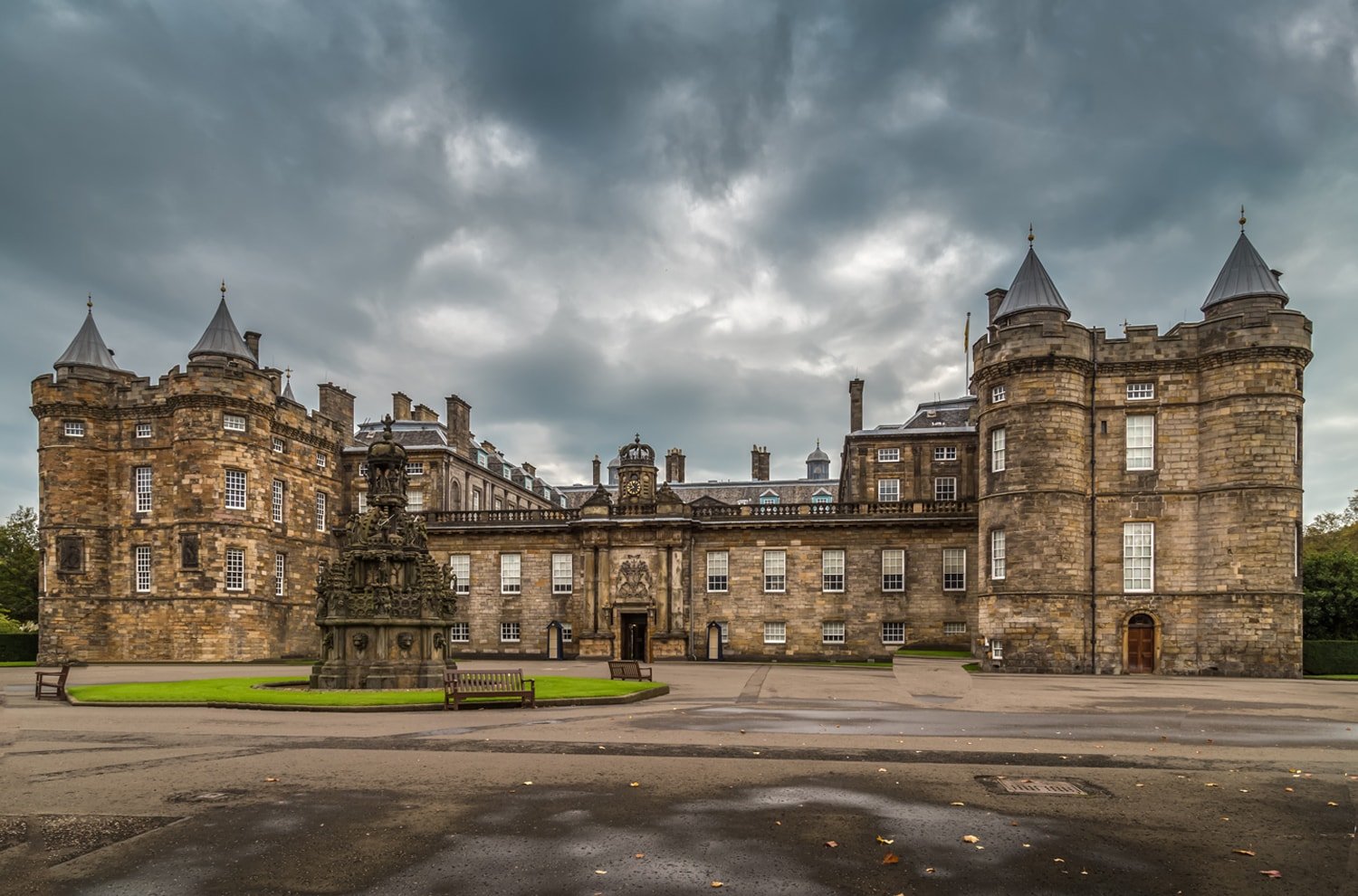
The castle is now Queen Elizabeth II’s official residence in Scotland.
Located at the Royal Mile in a hilly public park, the castle has a lawn covered central court at the end of Canongate. When the royal family is not in residence the visitors are allowed on a tour.
Queen Mary’s bed chamber is the highlight of the tour, which was where the queen was confined from 1561 to 1567 by her sister, Elizabeth I, Queen of England. It was also here that during her pregnancy, her husband, Lord Darnley, restrained her while his henchmen killed her secretary and apparent lover, Rizzio. A plaque in the next room marks the place where he bled to death. Queen Mary’s short but turbulent life came to a macabre end when she was executed in 1587 by Queen Elizabeth who had suspected her of plotting to overthrow her regime.
Mary’s son, James VI, was crowned King of Scots when he was just 13 months old in 1967, and, ironically, became James I, King of England in 1603, upon the death of Queen Elizabeth I who did not have any children of her own.
Grassmarket
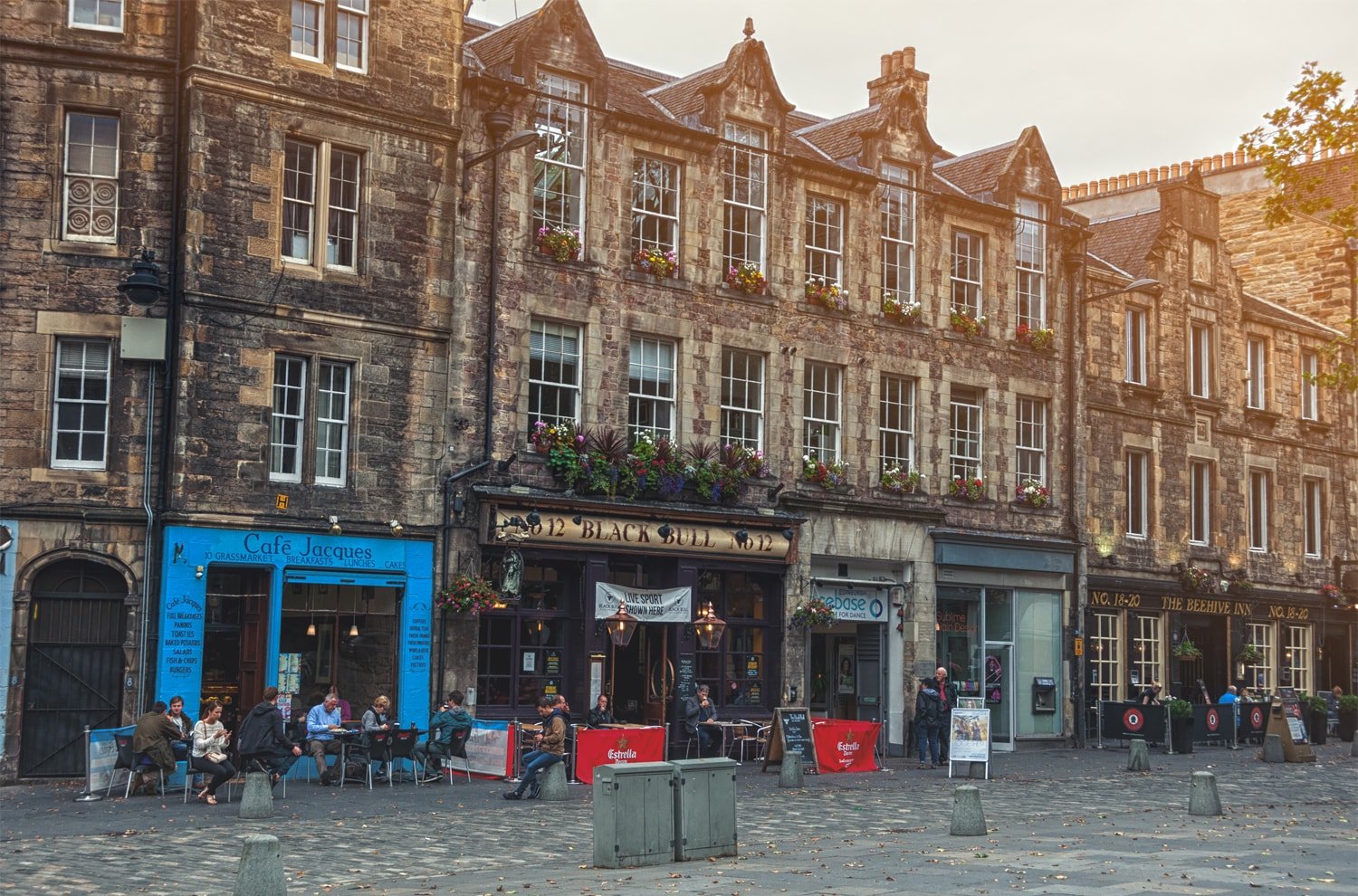
The Grassmarket was where the cattle market functioned, from the 15th century to early 20th century. Once the city’s main place of execution, a monument at the eastern end commemorates over 100 martyred Covenanters, which is exactly where the gallows once stood.
The broad square has many pubs and restaurants. Among them is the White Hart Inn, once patronised by Robert Burns. It is the city’s oldest pub, being in business since 1516. It has also hosted William Wordsworth in 1803. The long ravine from the Grass market, eastward, was through which the cattle were driven from the pastures around Arthur’s Seat to the city walls. Around two dozen clubs and bars function here today, all within five minutes’ walk from each other and Grassmarket has become the heart of Edinburgh’s nightlife.
Scott Monument

The Scott Monument is the largest monument in the world that commemorates a writer (Sir Walter Scott). About 287 steps lead to the top of the monument from where the city with its countryside is visible in a breath taking panorama. The museum room describes in detail about Sir Walter Scott, his life and literary journey, and also about the monument. It is located in Princess Street Gardens across the Jenners department store, and close to Edinburgh Waverley railway station, which is named after Scott’s Waverley novels.
St Giles Cathedral
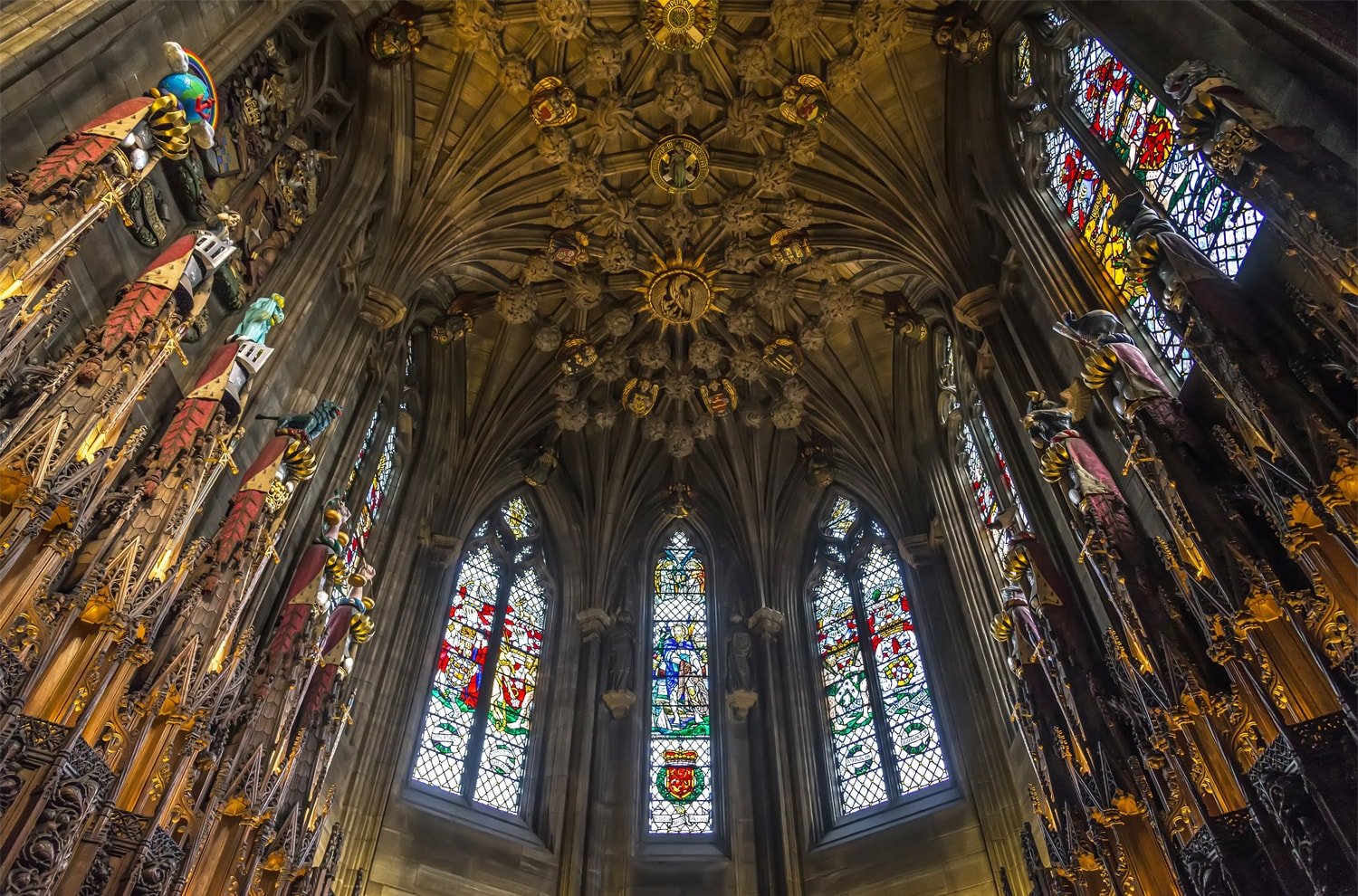
Scottish Parliament Building
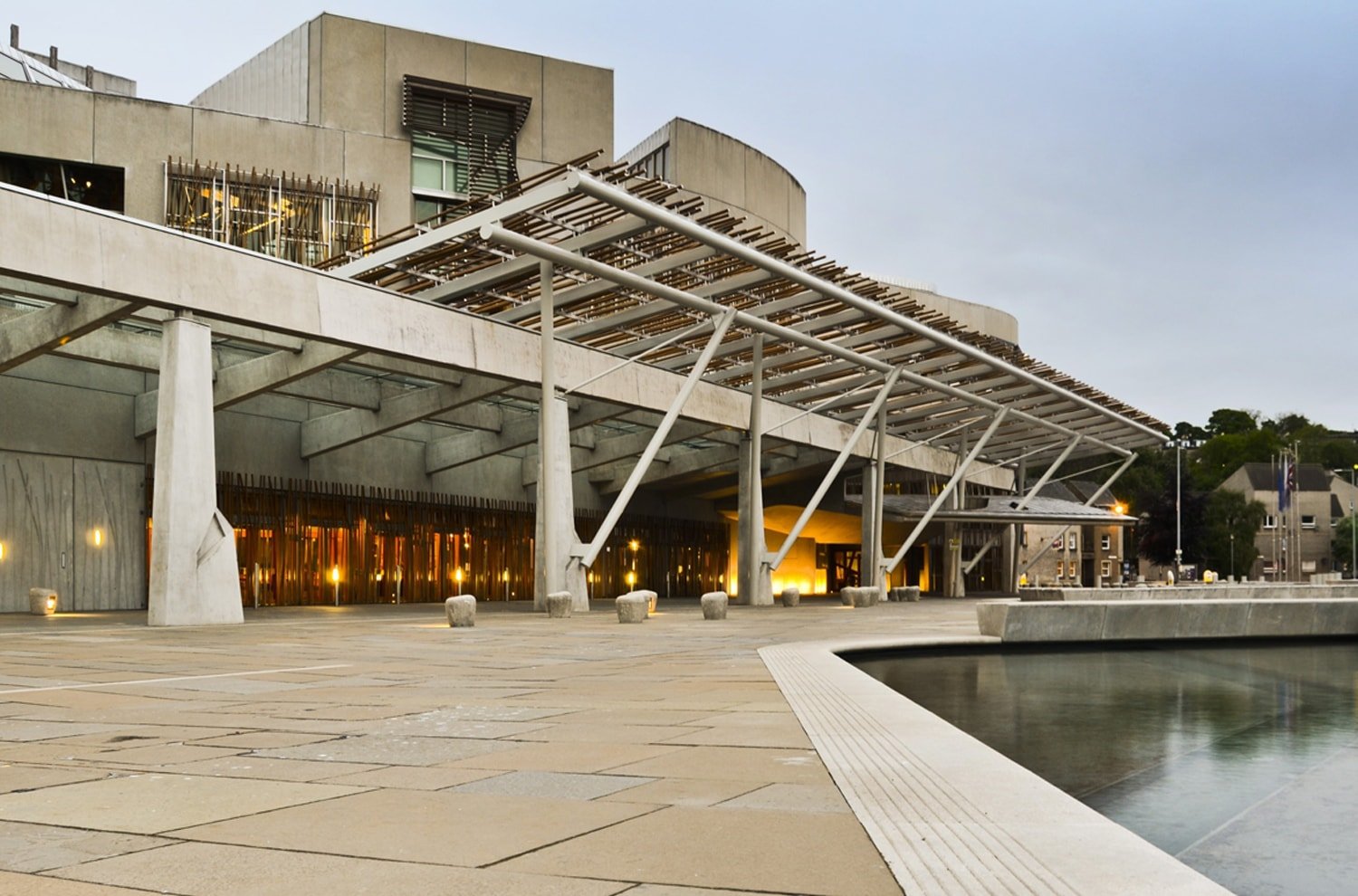
Built on the site of a former brewery, the Scottish Parliament building was officially opened by Queen Elizabeth in October 2005. The Catalan architect EnricMiralles designed it, charting its ground plan to represent a ‘flower of democracy rooted in Scottish soil’, of which you can get the best view when admired looking down from Salisbury Crags.
The architect’s belief that a building can be a beautiful work of art is well represented in this edifice. The building has a strange exterior, which is also symbolic in a way. Inspired by one of Scotland’s famous painting of the silhouette of Reverend Robert Walker Skating on Duddingston Loch, Miralles constructed the oddly shaped windows on the west wall. The asymmetric panels on the main façade, represents a curtain being drawn aside, symbolises an open government.
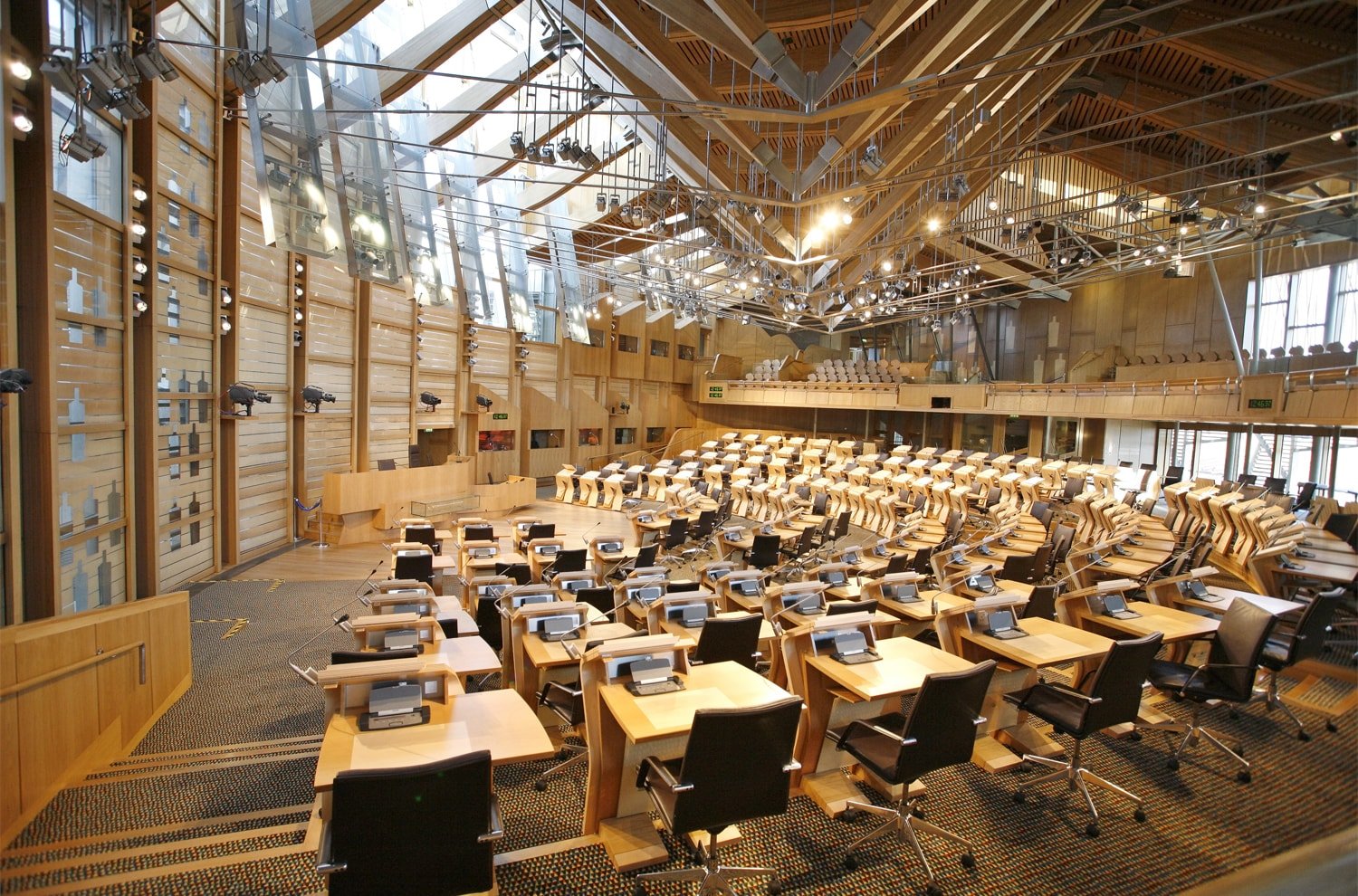
Designed not to glorify but to humble the politicians who sit within, this majestic chamber has windows that face the Calton hill, allowing a good view of the monuments that reminds of the Scottish Enlightenment. Steel threads suspend the massive, sharp oak beams of the roof, like Damoclean swords.
Scottish National Gallery Of Modern Art
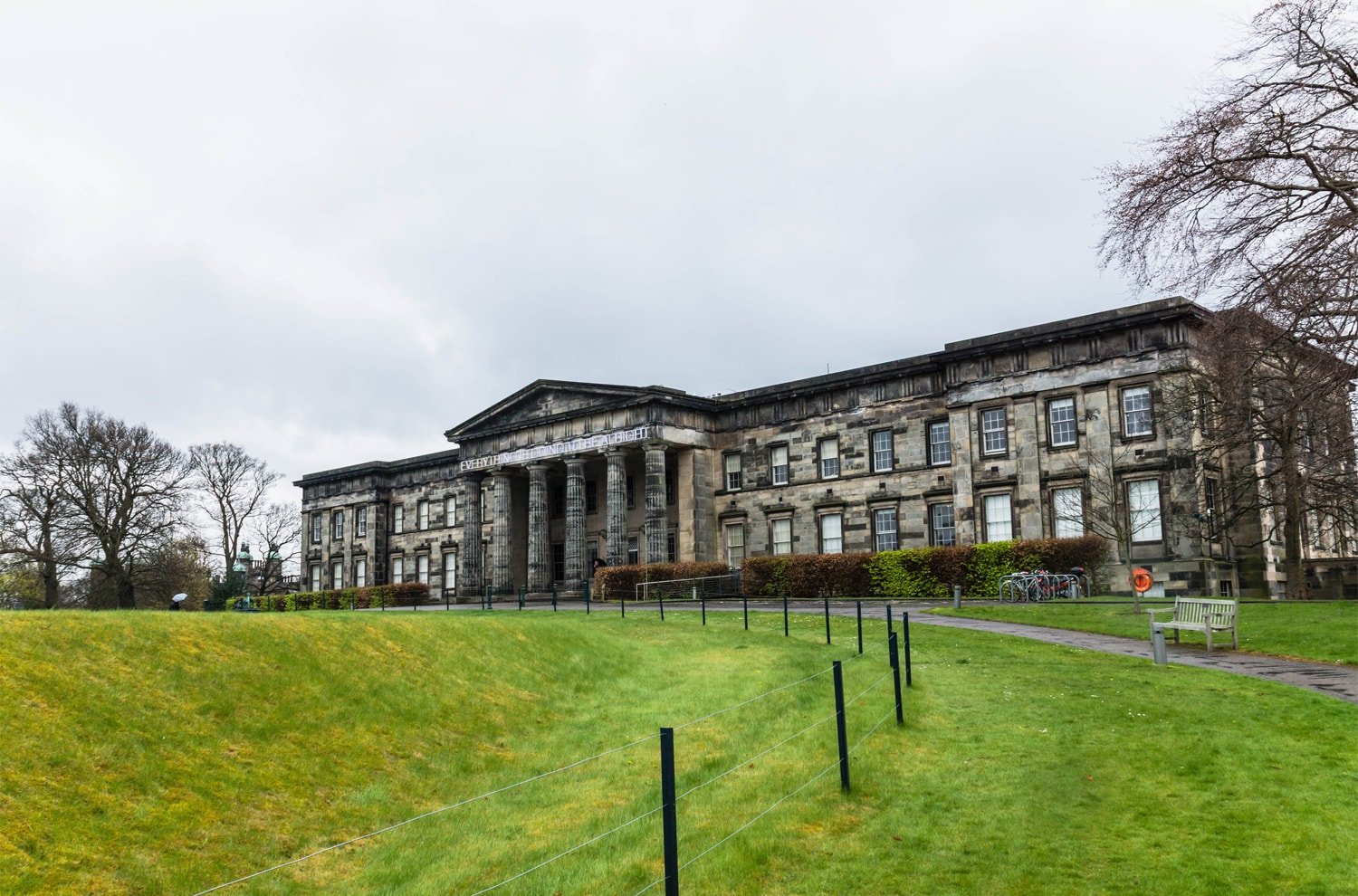
Displaying paintings and sculptures by Pablo Picasso, Georges Braque, Henri Matisse and Andre Derain, the Scottish National Gallery of Modern Art had actually been a school earlier. The gallery also houses an excellent restaurant in its basement. In a former orphanage across the street is the Gallery of Modern Art Two (the Dean Gallery), which houses the re-created studio of the Scottish-Italian sculptor, Sir Eduardo Paolozzi and the towering sculpture Vulcan.
Royal Botanic Garden Edinburgh
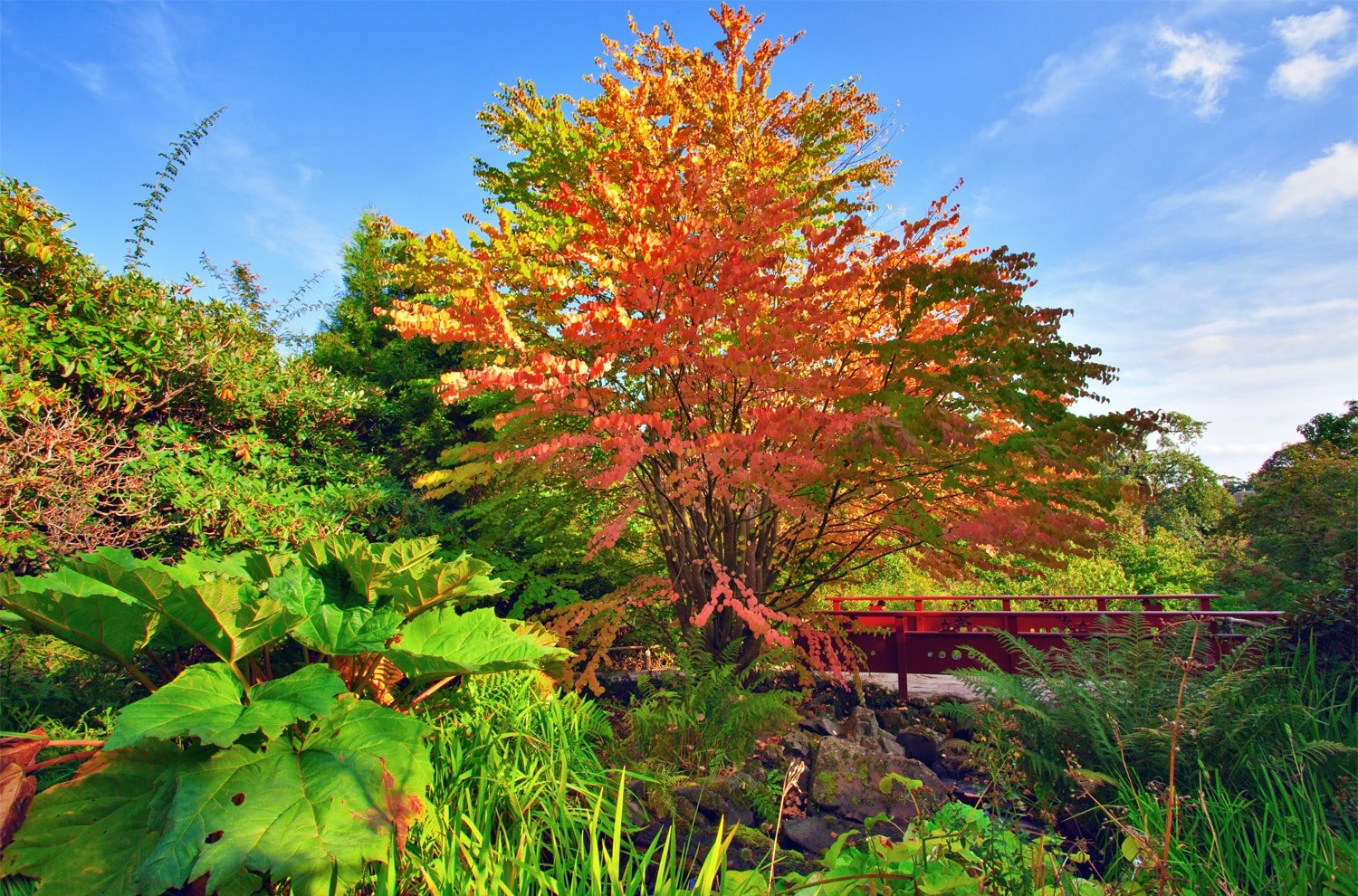
The Royal Botanic Garden of Edinburgh is a centre for study of plants, their diversity and conservation and is the second oldest institution of its kind, after the Oxford Botanic Garden, and was founded near Holyrood in 1670. In 1823, it was moved to its present location. Its vast 70 acres include beautiful landscapes, Victorian glass houses, vibrant rhododendron and azalea, and a majestic rock garden. The environmentally-friendly building that overlooks the main entrance on Arboretum Place, is the John Hope Gateway. Exhibitions on biodiversity, climate change and sustainable development are held here. Rare plants and a specially created biodiversity garden can also be seen here.
Holyrood Park
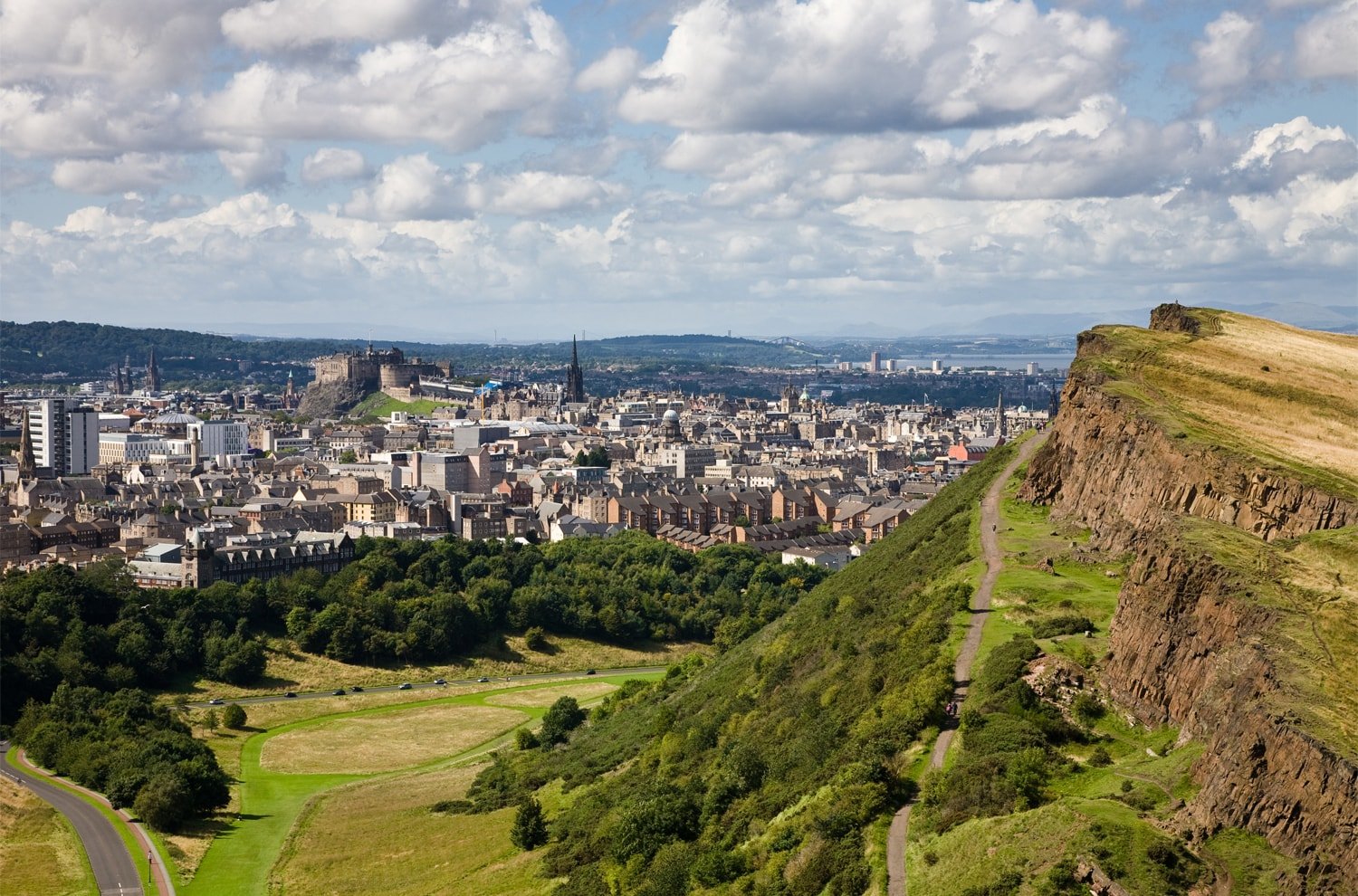
Real Mary King’s Close
Named after a former landowner, the lane Real Mary King’s Close, lies hidden beneath the city chambers. In 1645, the residents who fell ill with the bubonic plague, were quarantined here and were left to die. The bodies were removed and buried and the street fell open to visitors, after the plague passed. The few people who returned, reported ghostly sightings and never returned, leaving the close deserted for decades. The Royal Exchange was built directly over the Close in 1753 by the city authorities. This sealed it off entirely, and thus ensured it remained intact but for the upper stories which were destroyed. You can today walk among the remains of the shops and houses. People still report eerie sounds or ghostly visions of a crying young girl. Visitors leave small offerings like dolls, pieces of ribbon or candy for the girl. Children under age five are not allowed entry.
Rosslyn Chapel
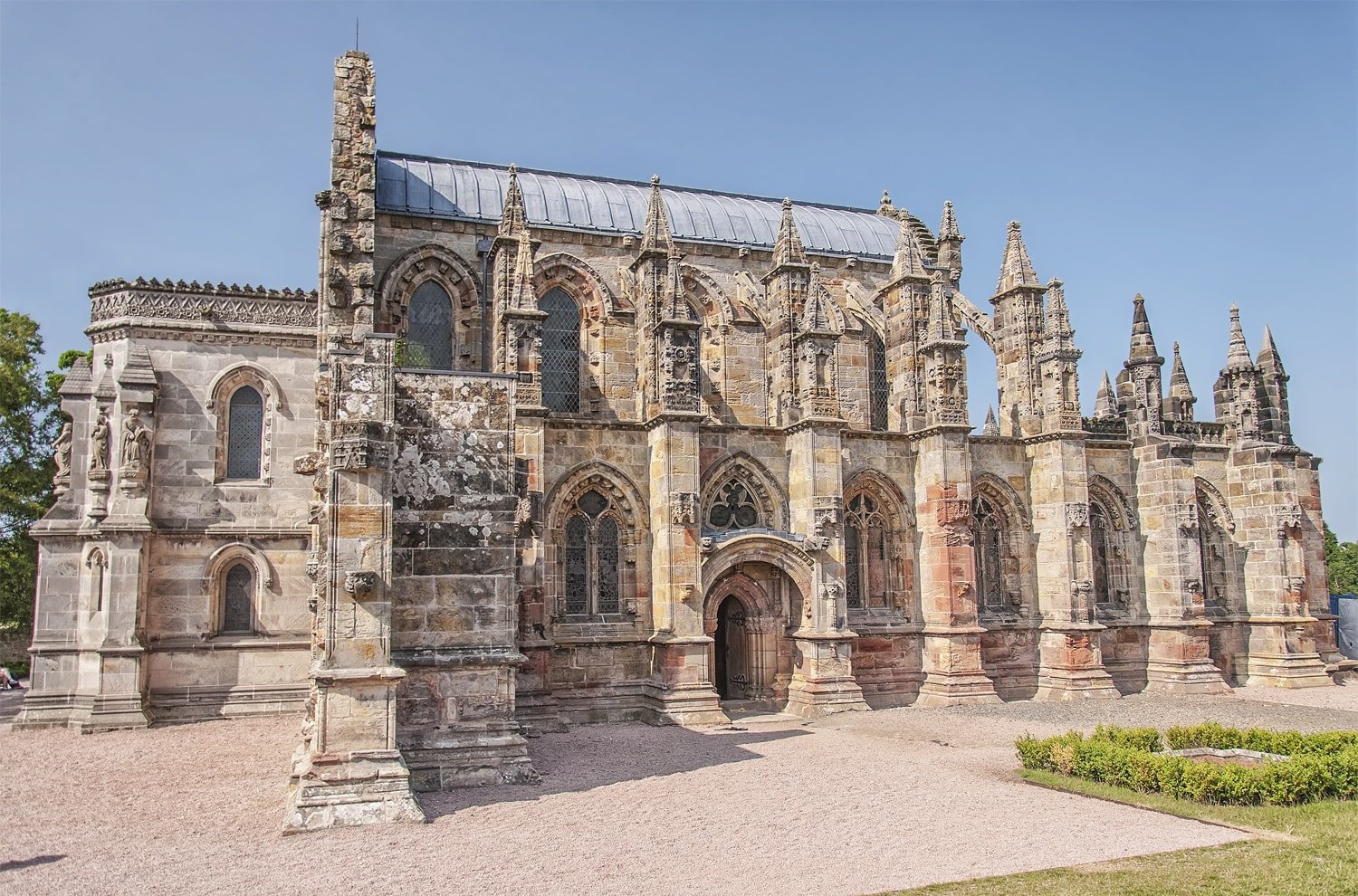
It was originally conceived by Sir William Sinclair (circa 1404-80) and was dedicated to St. Matthew in 1446. Human figurines, animals and plants cover every square inch of the stonework, some depicting the medieval order of the Knights Templar and Freemasonry symbols. Though, initially, a cruciform structure was conceived to be a part of the chapel, only the choir and parts of the east transept walls alone were completed.
Scotch Whisky Experience

The whisky making process is explained beautifully to the visitors in the journey through the barley fields, malt kiln in the malt mill, mash tun, washback and the final stage of pot still. The process slows down at this stage, spreading the restful smell of the Oak Casks, counting down the years of its maturation. Aided by the ample doses of the magic ingredient of time, whisky takes on an amber hue, tastes smooth and develops a lingering quality, with maturation. Each countryside imparts its own unique flavour to its whisky. Scotland has diverse whisky regions that infuse their whiskeys with varying aromas and flavours.
Royal Yacht Britannia
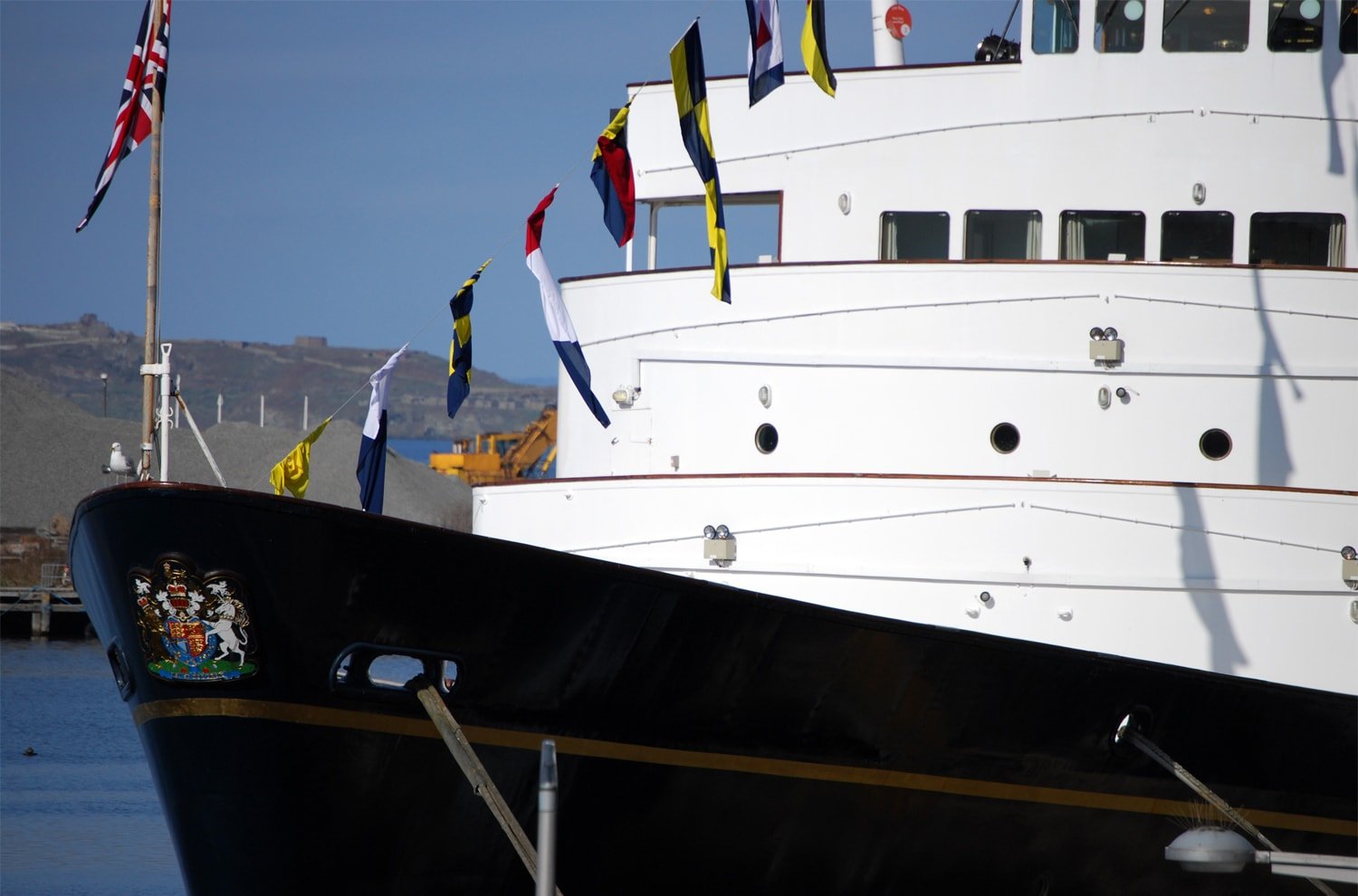
The décor of the 1950s can be seen in the monument. It also reveals the Queen’s preference of simple surroundings. But, the ship required something more than ‘simple’ when the Queen travelled in it. A special garage was built on the deck to accommodate 45 members of the royal household, five tons of luggage and a Rolls-Royce. The crew consisted of an admiral, 20 officers and 220 yachtsmen.
The 1930s built racing yacht, Bloodhound, and owned by the Queen in the 1960s, joined Britannia in 2010. Except for in July and August when the Bloodhound is on cruise, she is moored alongside Britannia.
Cramond
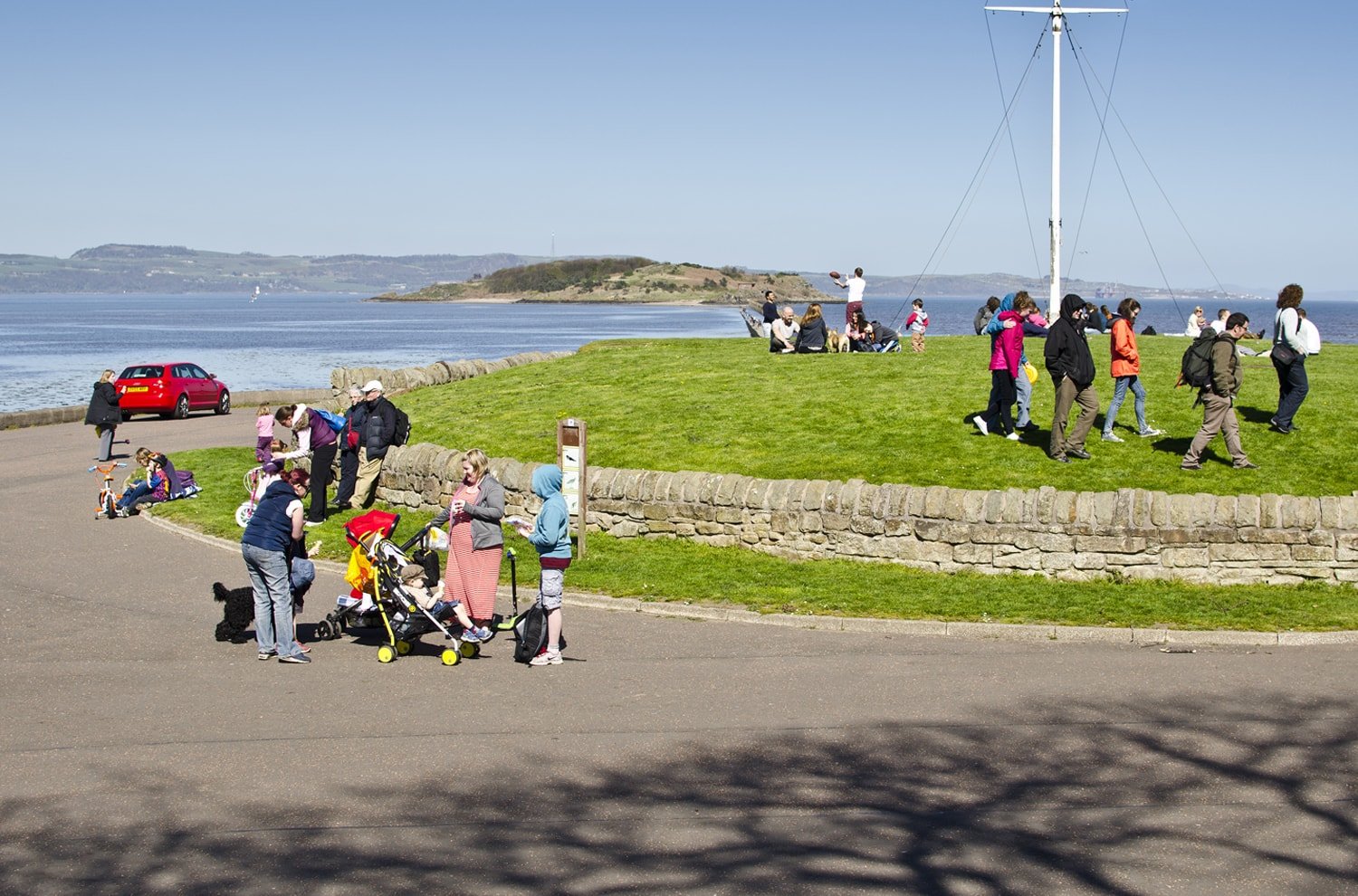
With a 17th century church and a 15th century tower house, Cramond was originally a mill village. The walks are enjoyable here, along the river to the dilapidated mills. Maltings, opposite the cottage on the far bank, hosts an exhibition on Cramond’s history.
HARRY POTTER’S EDINBURGH AND SCOTLAND
The world famous book and movie franchise, Harry Potter, has its origins in Edinburgh and there are several places that have shaped and influenced in the creation of the characters and places in the novels.
The novel set in a mystical fantasy land with a bespectacled young boy as its protagonist, was was written by a single mother J K Rowling, who was mired in relative poverty while writing the first book in the series. The book instantly catapulted her to fame and she went on to write six more sequels, each becoming bestsellers.
J K Rowling’s life has literally been a rags to riches tale, from being on state support while she was writing the first book to becoming a multimillionaire in a short span of five years. In 2008, she was estimated to have been worth £560 million.
Elephant House
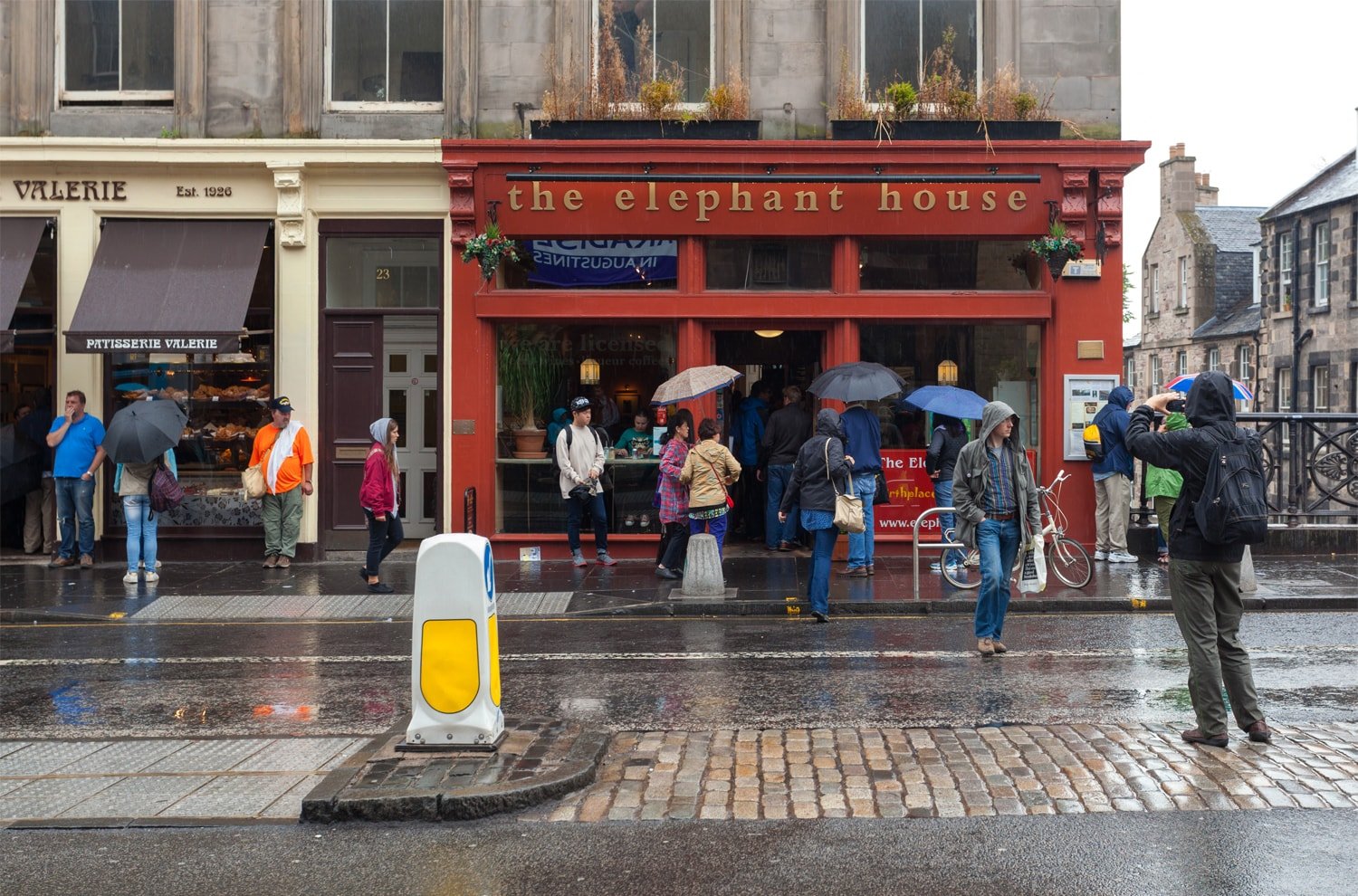
Black Medicine Coffee
This place has also been the writer’s favourite haunt, allowing guesses about her writing parts of her books here too.
Resembling the shops at Diagon or Nockturn Alley, the Black Medicine Coffee house is a great place to refresh your tired nerves with a fresh brew of coffee.
Spoon Cafe also known as Nicolson’s Café
Some say that this was the place where JK wrote her early chapters of Harry Potter. This café is located right above Black Medicine.
Diagon Alley
The allusion to Harry Potter in this place and many around, is unmistakable.
Potterrow Port
There are guesses and rumours that JK could have selected the last name of her protagonist and the book name from this place in Edinburgh as she had to pass this place often.
Greyfriar’s Kirkyard

George Heriots School aka Hogwarts
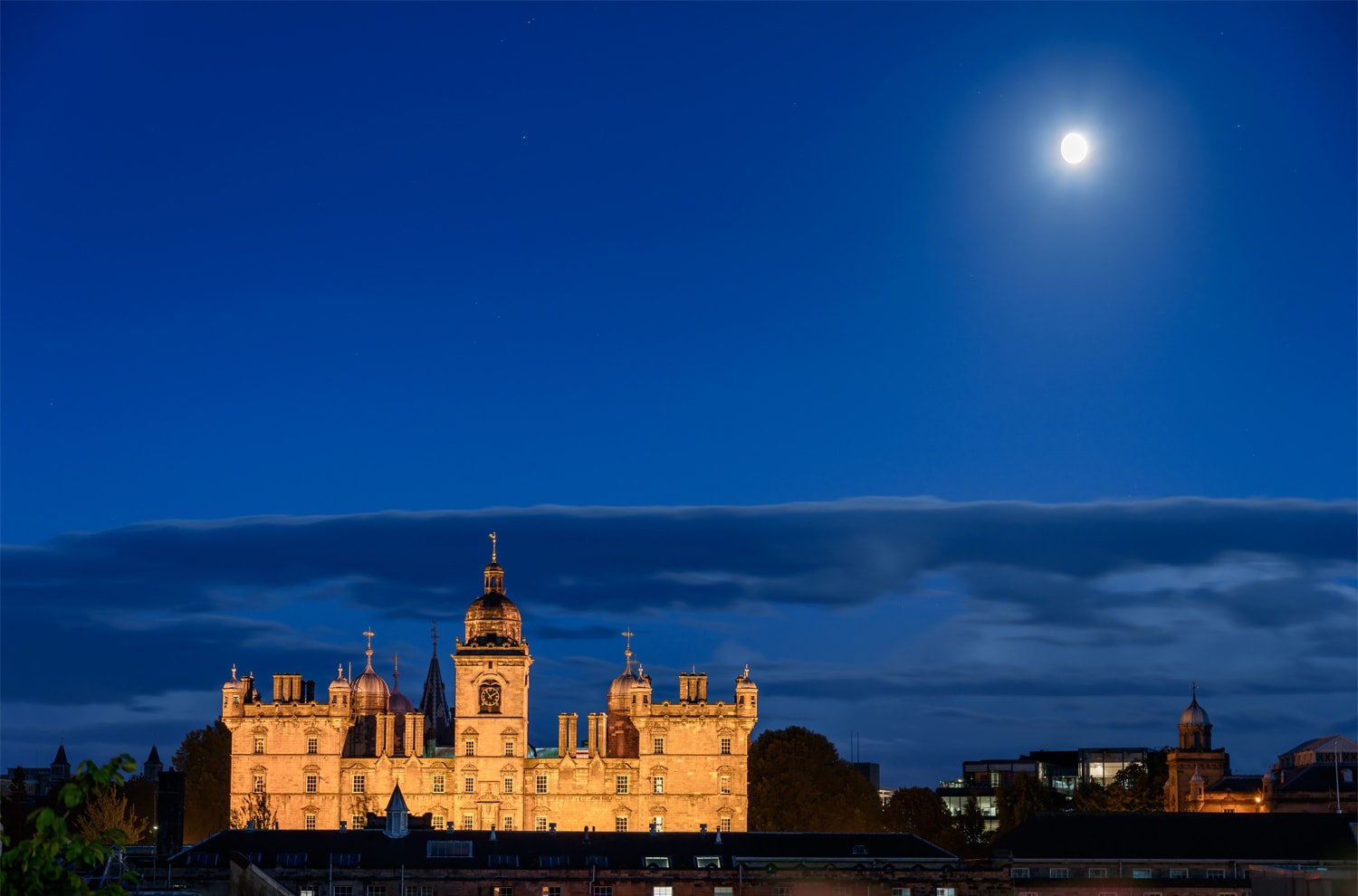

SOME MORE POTTER SPOTS AROUND SCOTLAND
Glasgow Cathedral
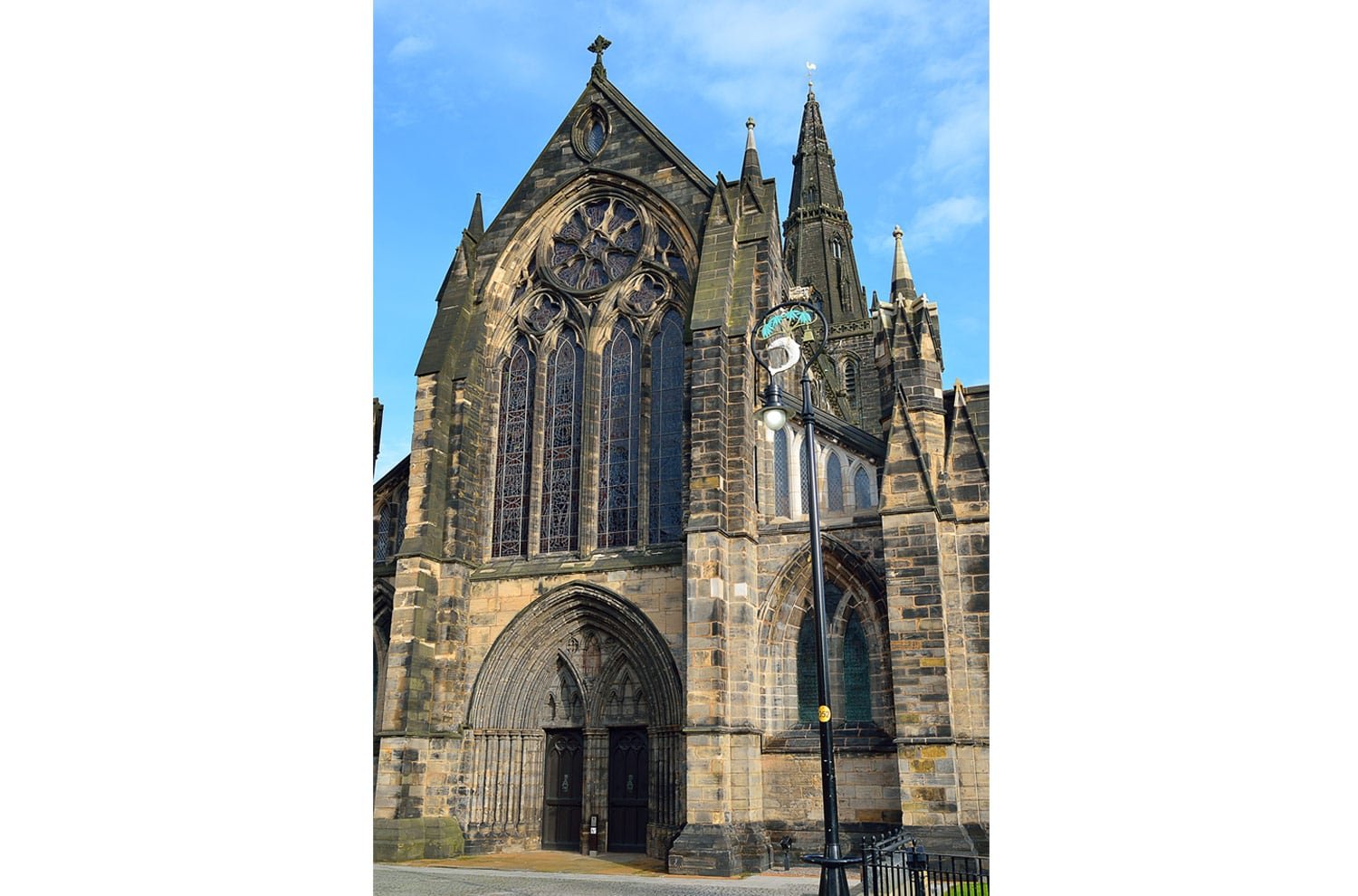
Glenfinnan Viaduct
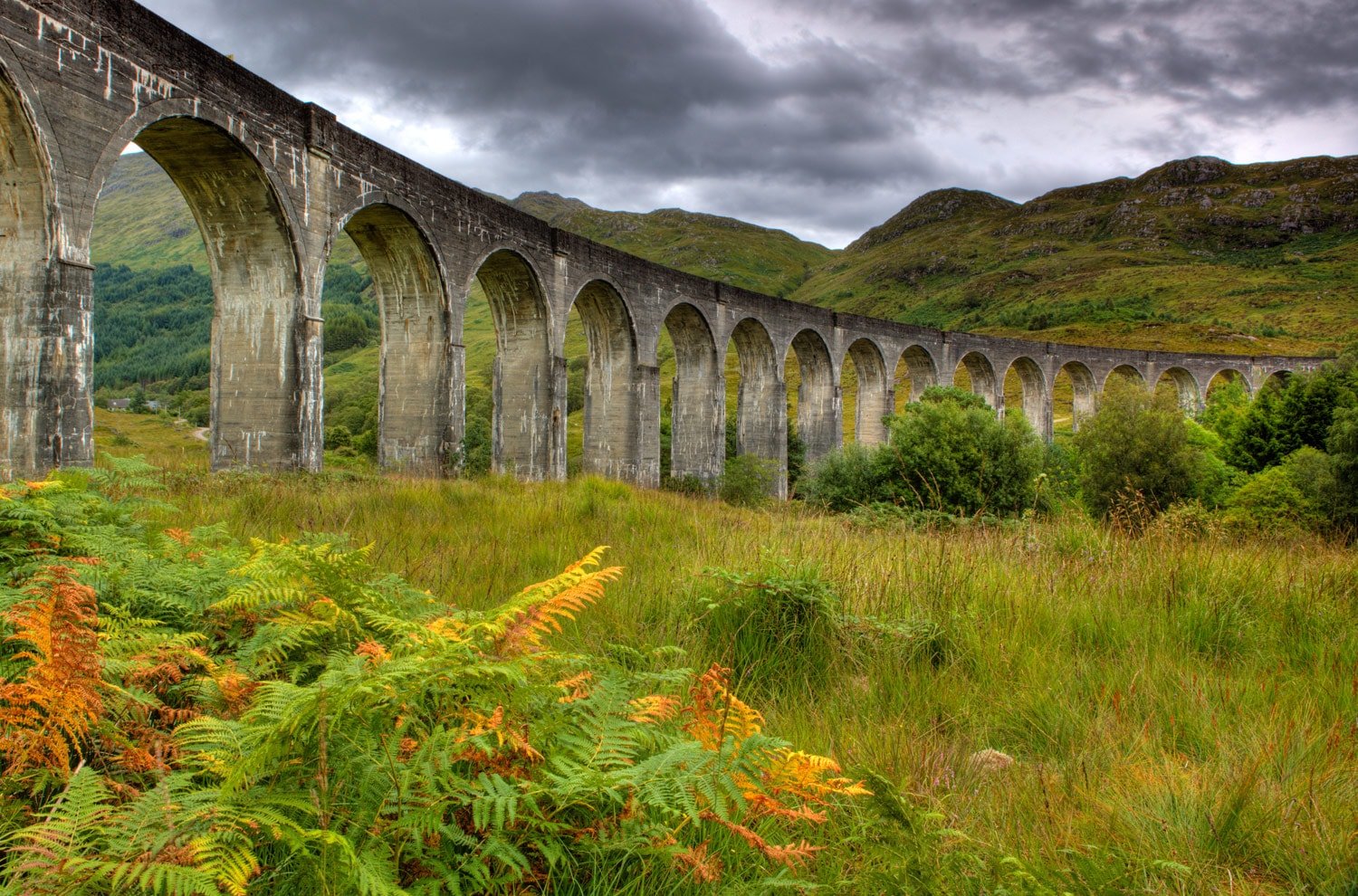
Loch Shiel and Loch Lomond
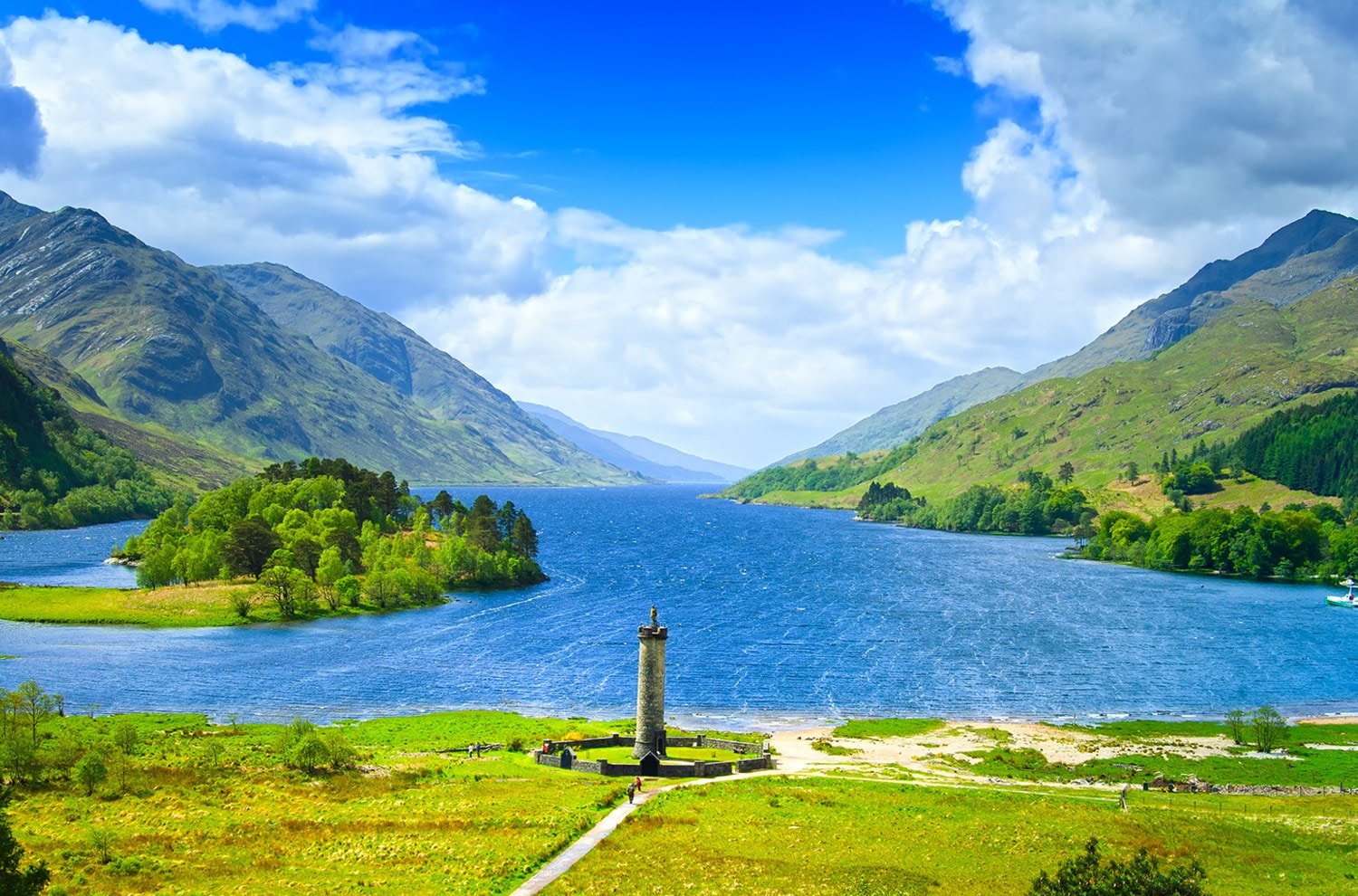
Jacobite Steam Train, Fort William
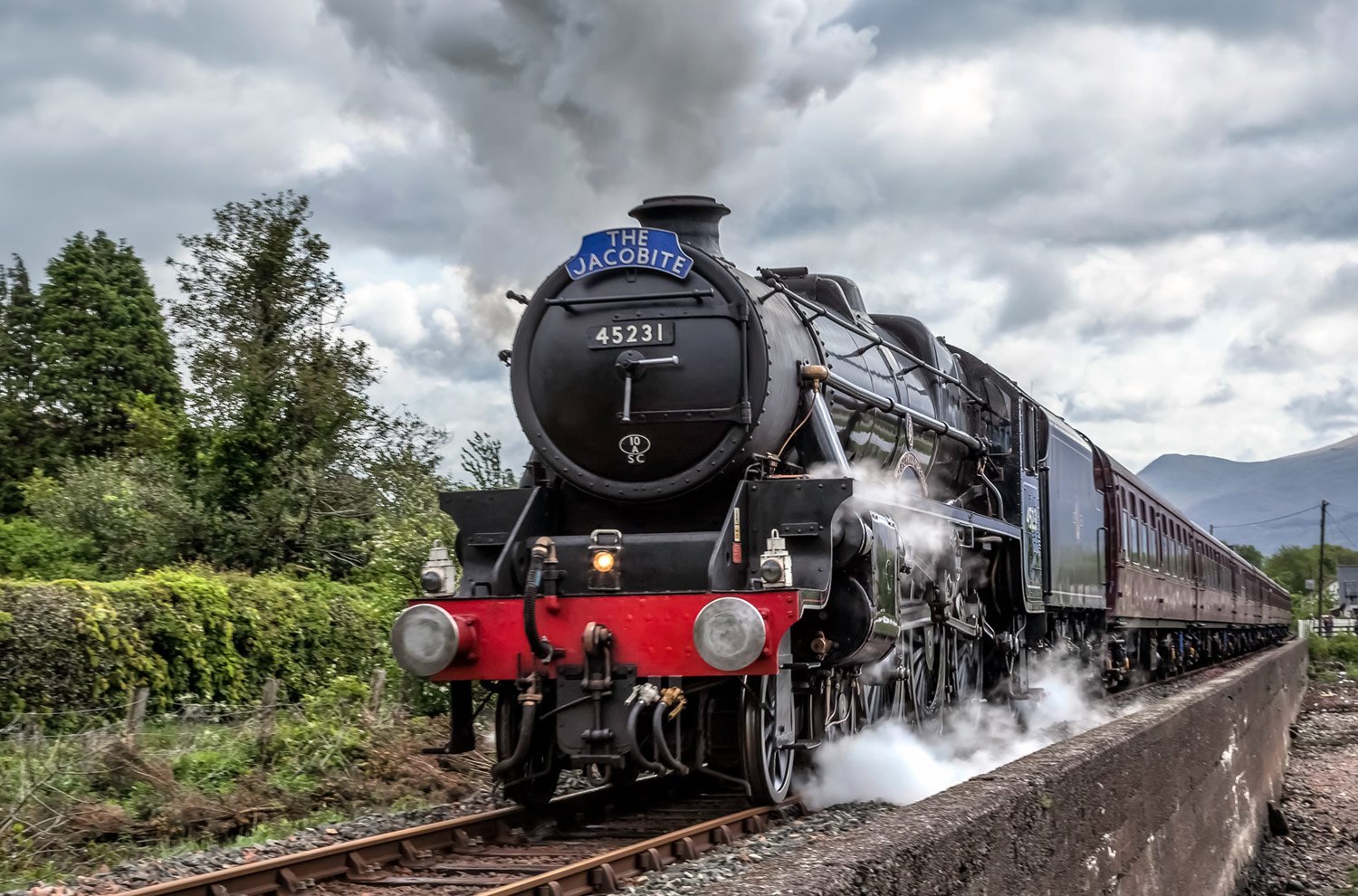
The Jacobite stream train departs from here in summer. It ‘resembles’ JK’s ‘Hogwarts Express’.

